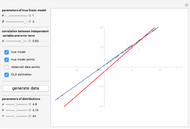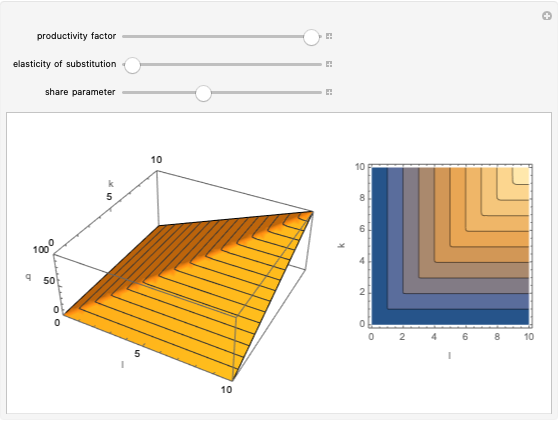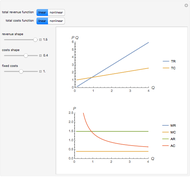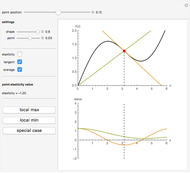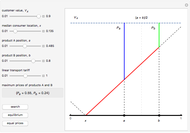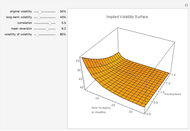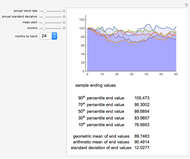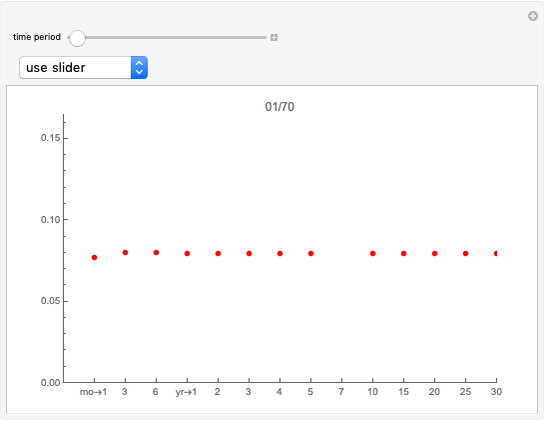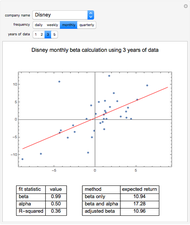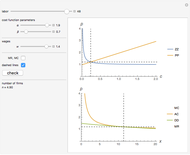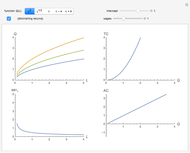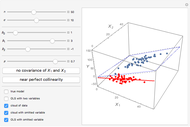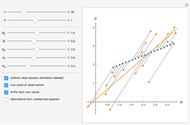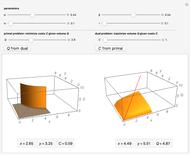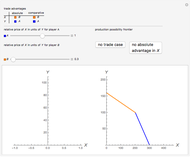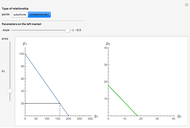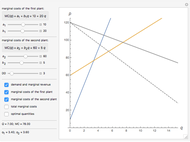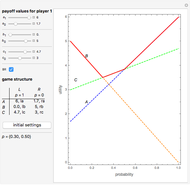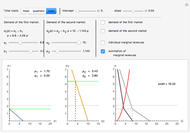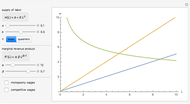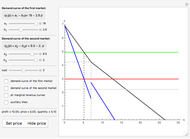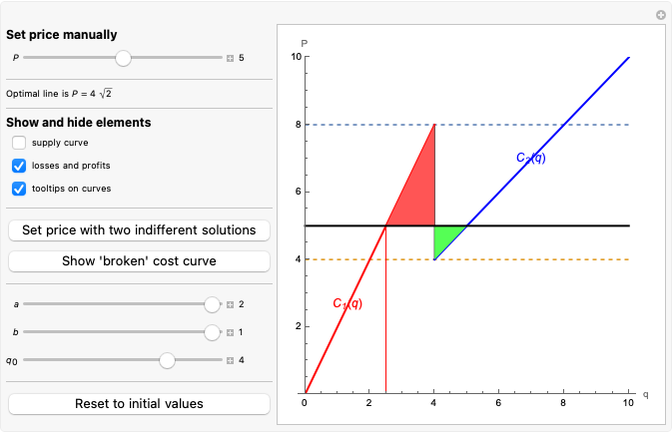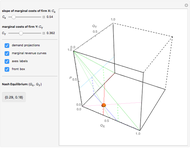Simultaneity Bias

Requires a Wolfram Notebook System
Interact on desktop, mobile and cloud with the free Wolfram Player or other Wolfram Language products.
This Demonstration develops the geometric intuition behind the concept of simultaneity bias. We consider a true linear system of simultaneous equations (the index  for each observation is dropped for readability):
for each observation is dropped for readability):
Contributed by: Timur Gareev (May 2018)
Open content licensed under CC BY-NC-SA
Snapshots
Details
Consider a system of simultaneous equations where each observation gives one point as its solution and which is shifted by error terms. Even if there are many observations, the cloud of points does not allow us to understand the model. In order to identify the relationship between  and
and  (both endogenous variables), we need to have at least one exogenous variable (
(both endogenous variables), we need to have at least one exogenous variable ( in our case), so we simulate several values of
in our case), so we simulate several values of  . If there are no error terms
. If there are no error terms  and
and  in the model, we would get the blue points that reflect the true relationship between
in the model, we would get the blue points that reflect the true relationship between  and
and  . If the error terms
. If the error terms  and
and  do not suffer from endogeneity, we could use ordinary least squares to fit the model of the form
do not suffer from endogeneity, we could use ordinary least squares to fit the model of the form
 .
.
The problem is that such is not the case. To simplify matters and make the visualization more appealing, we keep the error term in the unobserved equation  by default (the bottom checkbox changes this setting).
by default (the bottom checkbox changes this setting).
We may express  algebraically in reduced form from the system of simultaneous equations and see that it depends on
algebraically in reduced form from the system of simultaneous equations and see that it depends on  :
:
 .
.
As a result, each observation shifts  to the value of
to the value of  horizontally. At the very same time,
horizontally. At the very same time,  shifts to the value of
shifts to the value of  vertically. Because
vertically. Because  changes from observation to observation randomly, we see such a pattern on the plot:
changes from observation to observation randomly, we see such a pattern on the plot:
 .
.
We may divide the vertical to horizontal shift and find the slope of shifts, which is the same for all observations as  cancels out. Indeed:
cancels out. Indeed:
 .
.
This effect is shown on the plot. Use the  slider to see the shift effect. Use the checkboxes to turn on and off different plot elements and study their behavior.
slider to see the shift effect. Use the checkboxes to turn on and off different plot elements and study their behavior.
In order to estimate the model, you can use either instrumental variable (IV) or control function (CF) approaches. For instance,  can be regressed on
can be regressed on  , which is a natural instrument for this toy example. In practice, finding and substantiating relevant instruments is a challenging task.
, which is a natural instrument for this toy example. In practice, finding and substantiating relevant instruments is a challenging task.
References
[1] Wikipedia. "Endogeneity (Econometrics)." (Mar 30, 2018) en.wikipedia.org/wiki/Endogeneity_(econometrics).
[2] C. Dougherty, Introduction to Econometrics, 5th ed., Oxford, UK: Oxford University Press, 2016 pp. 345–350.
Permanent Citation










